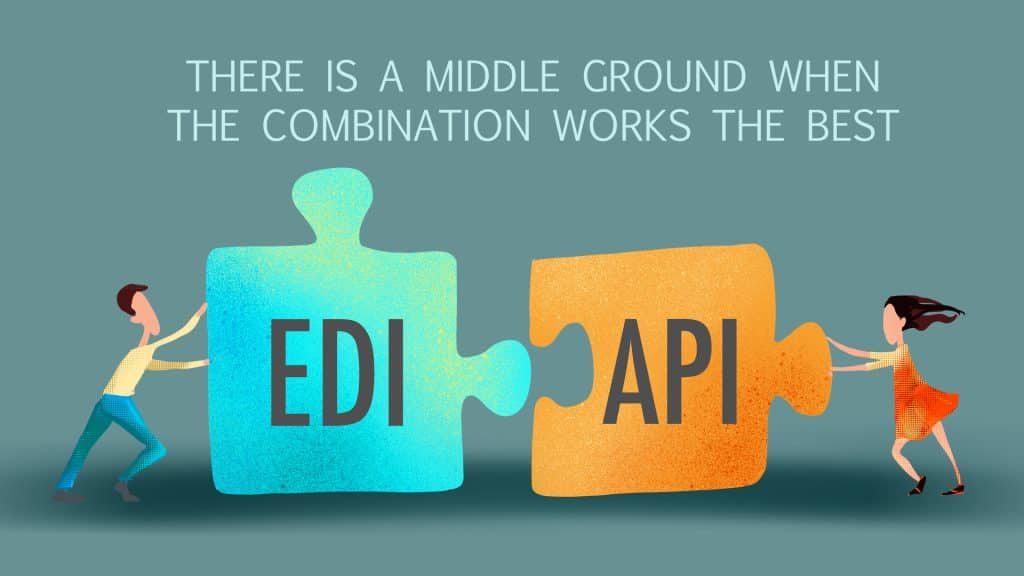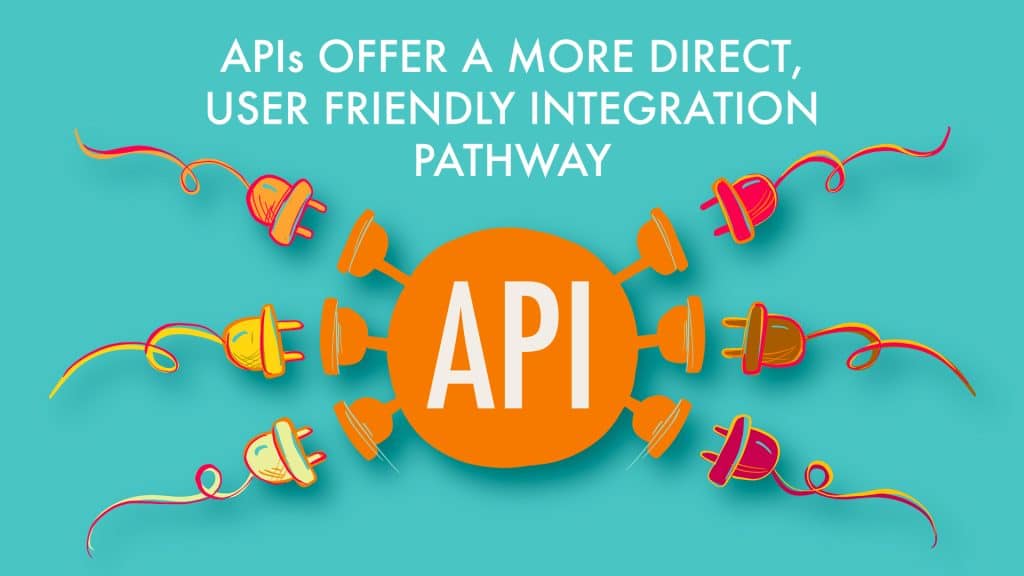
Running an efficient and successful ecommerce business requires managing many different lines of communication. There are a number of B2C and B2B interactions that must take place to carry out the delicate dance of accepting, processing, fulfilling, and shipping an order. The faster and smoother these exchanges happen, the more reliable your ecommerce workflows become and the happier your customers will be.
The key is establishing the proper integrations to streamline the necessary information exchanges between all of your partners and service providers. If done manually—using website data entry, faxed documents, and a tangled web of forms—your business is susceptible to any number of errors and delays that can disrupt its ability to satisfy customers and grow your brand.
Thankfully, electronic exchange integrations have been developed to eliminate this wasteful practice. That said, all B2B integrations are not created equal. An electronic data transfer integration typically falls into one of two categories: an Electronic Data Interchange (EDI) or an Application Programming Interface (API).
While both can be used to facilitate data and transactional exchanges between businesses, API integrations offer significant advantages over the older EDI standard.
EDI – A Passable Integration Standard That Is Showing Its Age
Electronic Data Interchanges are essentially digitized file feeds. Data from your internal system is translated into a specific file format and syntax that your partner’s internal system can understand. This file is then transmitted via SFTP, HTTPS, AS2, or some other secure delivery protocol.
The data translation process is where things get tricky. It requires EDI specialists on each end of the partnership to invest time and effort to establish a file format that can be understood and processed by each company’s system.
There are numerous trial runs that need to be conducted to ensure that the data is routed and translated correctly. Given the content of these transmissions (purchase orders, sensitive customer information, shipping details, inventory data, etc.), even a mistake as small as a single misinterpreted character could prove incredibly costly to your business.
Once an EDI integration has been established, there are Value-Added Networks (VANs) that can help remove some of the tedium by collecting EDI data through a single stream on your end and then handling the dispersal to all of the relevant partners according to their accepted protocols. A properly configured EDI integration partnership still serves its purpose of allowing systems from different companies to exchange relevant data with each other.
That said, creating EDIs involves substantial time and energy from both sides of the exchange. Because of this fact, it tends only to be an option for ecommerce businesses that can demonstrate enough sales volume to justify the effort.
While the Descartes Sellercloud omnichannel ecommerce platform can carry out EDI transactions, there is a better integration option—one that is faster, more accurate, and more open to ecommerce businesses of all sizes.

API – A More Direct, User-Friendly Integration Pathway
Application Programming Interfaces (APIs) take advantage of specific elements of software and code being left open for outside data requests and transfers. An API designed to access specific elements of the host company’s system can be made available for partners to use. The result is a secure pipeline that is similar to an EDI in function but infinitely more user-friendly to establish and utilize.
EDI systems represent the natural evolution of B2B communication from mail to fax to computers. However, API systems represent the wholesale modernization and simplification of computer-to-computer interaction. While EDI is a derivative of the business world’s needs, APIs are the result of everyone’s increasing need to interact with internet-enabled devices in productive, dependable, and immediate ways.
As such, APIs are not exclusive to the world of ecommerce. They are used in nearly every facet of how we interact with devices. Whether you are surfing the web, ordering takeout, comparing real estate, or making an online purchase, you are likely interacting with dozens (if not hundreds) of APIs.
The truth is modern ecommerce owes much of its accessibility and efficiency to the way APIs have become both more prevalent and feature-rich over the past decade. Everything from selling on third-party marketplaces to launching web-based advertising campaigns and managing shopping carts to printing shipping labels operates as an interconnected web of API calls and integrations.
These transactions and communications happen quickly, securely, and with an efficiency that older EDI systems struggle to match. Even without complex coding knowledge or a large IT staff, ecommerce businesses of all sizes and niches can rely on API-powered systems to grow as successful brands.
For all of APIs’ inherent strengths over EDI, there is a middle ground. When it isn’t possible to go exclusively with an API integration approach (EDI remains a standard in many industries), APIs can be used as an architectural layer placed over top of an existing EDI infrastructure.
In these cases, the API layer can be used to both input and receive data, which is then pushed through your existing EDI translation and transmission processes. The result is the convenience of API while still allowing for interactions with EDI-driven partners.
Descartes Sellercloud maintains up-to-date integrations with 350+ different ecommerce partners. When possible, our platform takes advantage of API-level access to ensure transactions and data transfers are as reliable and feature-rich as possible. That said, in cases where API integrations are either not possible or not available, we also support EDI transactions.
The reality is that, in some industries, change takes time. While the ecommerce industry continues to grow and advance at an astounding pace, many of the other industries ecommerce relies upon do not. As such, we know it is important to maintain an ecommerce growth platform that can make interacting with all of these different partners as smooth and pain-free as possible. This means that as our partners evolve and upgrade their integration features, you can trust that we will do the same, whether they use EDI or API.
For more on how Descartes Sellercloud’s robust integrations and partnerships can help increase the efficiency of your ecommerce business, contact us directly for a free demo.




